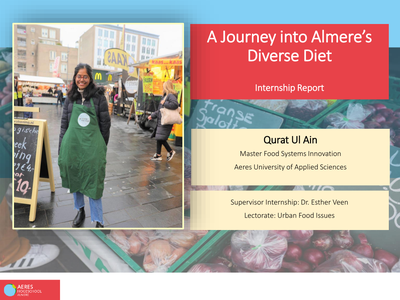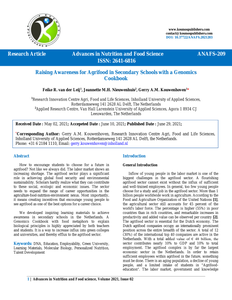Penicillin acylase (PA) from Escherichia coli can catalyze the coupling of an acyl group to penicillin- and cephalosporin-derived beta-lactam nuclei, a conversion that can be used for the industrial synthesis of beta-lactam antibiotics. The modest synthetic properties of the wild-type enzyme make it desirable to engineer improved mutants. Analysis of the crystal structure of PA has shown that residues alphaR145 and alphaF146 undergo extensive repositioning upon binding of large ligands to the active site, suggesting that these residues may be good targets for mutagenesis aimed at improving the catalytic performance of PA. Therefore, site-saturation mutagenesis was performed on both positions and a complete set of all 38 variants was subjected to rapid HPLC screening for improved ampicillin synthesis. Not less than 33 mutants showed improved synthesis, indicating the importance of the mutated residues in PA-catalyzed acyl transfer kinetics. In several mutants at low substrate concentrations, the maximum level of ampicillin production was increased up to 1.5-fold, and the ratio of the synthetic rate over the hydrolytic rate was increased 5-15-fold. Moreover, due to increased tendency of the acyl-enzyme intermediate to react with beta-lactam nucleophile instead of water, mutants alphaR145G, alphaR145S and alphaR145L demonstrated an enhanced synthetic yield over wild-type PA at high substrate concentrations. This was accompanied by an increased conversion of 6-APA to ampicillin as well as a decreased undesirable hydrolysis of the acyl donor. Therefore, these mutants are interesting candidates for the enzymatic production of semi-synthetic beta-lactam antibiotics.
DOCUMENT
Vegetables have low taste intensities, which might contribute to low acceptance. The aim of this study was to investigate the effect of taste (sweetness, sourness, bitterness, umami, and saltiness) and fattiness enhancement on consumer acceptance of cucumber and green capsicum purees. Three concentrations of sugar, citric acid, caffeine, mono-sodium glutamate, NaCl, and sunflower oil were added to pureed cucumber and green capsicum. Subjects (n = 66,35.6 ± 17.7 y) rated taste and fattiness intensity. Different subjects (n = 100, 33.2 ± 16.5 years) evaluated acceptance of all pureed vegetables. Taste intensities of vegetable purees were significantly different (P < 0.05) between the three tastant concentrations except for umami in both vegetable purees, sourness in green capsicum puree, and fattiness in cucumber puree. Only enhancement of sweetness significantly (P < 0.05) increased acceptance of both vegetable purees compared to unmodified purees. In cucumber purees, relatively small amounts of added sucrose (2%) increased acceptance already significantly, whereas in green capsicum acceptance increased significantly only with addition of 5% sucrose. Enhancement of other taste modalities did not significantly increase acceptance of both vegetable purees. Enhancing saltiness and bitterness significantly decreased acceptance of both vegetable purees. We conclude that the effect of taste enhancement on acceptance of vegetable purees differs between tastants and depends on tastant concentration and vegetable type. With the exception of sweetness, taste enhancement of taste modalities such as sourness, bitterness, umami, and saltiness was insufficient to increase acceptance of vegetable purees. We suggest that more complex taste, flavor, or texture modifications are required to enhance acceptance of vegetables.
DOCUMENT

This research concerning the experience and future of zoos was carried out from 2011-2012 and takes regional ideas concerning Zoo Emmen as well as global visions into account. The research focuses partly on Zoo Emmen, its present attractions and visitors while also comparing and contrasting visions on the future in relationship to other international zoos in the world. In this way, remarkable experiences and ideas will be identified and in the light of them, it can serve as inspiration for stakeholders of zoos at large. The main research subject is a look at the future zoos in view of: The Zoo Experience – an international experience benchmark; The Zoo of the Future – a Scenario Planning approach towards the future; The virtual zoo - zoo’s in the internet domain.
DOCUMENT

There is a strong relation between food and identity. Especially when people move to another country, traditional food (or simply food from their country of origin), symbolizes a link with culture, communityand ethnic identity. As people move around the globe they introduce new foods in the places they land. Almere is becoming one of the largest majority minority cities of the Netherlands. Walking around thecity, the diversity of food ingredients and eating cultures as shown in shops and restaurants is immediately clear. The aim of this project was to get an insight into the diets of the residents of Almere so as to learn about eating patterns in a multicultural city and how multiculturality affects the diets of both newcomers and people who have been living here for generations.
DOCUMENT

This speech discusses how the professorship intends to support practitioners in the nursing domain and contribute to shaping nursing leadership and each person's professional individuality. The title of the speech, “Notes on Nursing 2.0,” is particularly intended to emphasize the need for these changes in the nursing domain. Not by assuming that nothing has changed in care and nursing since Nightingale's time. There has. Being educated in the professional domain is not only a given but a requirement. The knowledge domain of care and nursing has developed far and wide in nursing diagnostics and standards. Nursing science research, which Nightingale once started as the first female statistician in the British Kingdom, has firmly established itself in education and practice. Wanting to be of significance to others out of compassion is still the professional motivation, but there is no longer a subservient servitude (Cingel van der, 2012). At the same time, wholehearted leadership is not yet taken for granted in daily practice and optimal professional practice falters due to an equality principle of differently educated caregivers and nurses that has been held for too long. That is the need for change to which this 2.0 version “Notes on Nursing” and the lectorate want to contribute in the coming years. Chapter 1, through the metaphors in the story “The Cat Who Looked at the King,” describes the vision of emancipatory action research and the change principles that the lectorate will deploy. Chapter 2 contains the reason, mission and lines of research that are interrelated within the lectorate. Chapters 3 and 4 address the themes of identity and leadership, discussing their interrelationship with professional practice and developing a research culture. In addition, specific aspects that influence practice and work culture today are addressed, and how the lectorate contributes specifically to the development of nursing leadership and the formation of professional identity in the relevant domain is described. Chapter 5 contains a summary of the principles on which the research program is based, as well as information on current and future projects. Chapter 6 provides background information on the lector and the members of the knowledge circle.
DOCUMENT

How to encourage students to choose for a future in agrifood? Not like we always did. The labor market shows an increasing shortage. The agrifood sector plays a significant role in achieving global food security and environmental sustainability. Scholars hardly realize what they can contribute to these social, ecologic and economic issues. The sector needs to expand the range of career opportunities in the agriculture-food-nutrition-environment nexus. Most importantly, it means creating incentives that encourage young people to see agrifood as one of the best options for a career choice.Inspiring learning materials have been developed to achieve awareness in secondary schools in the Netherlands. A Genomics Cookbook with food metaphors to explain biological principles is highly appreciated by both teachers and students. It is a way to increase influx into green colleges and universities, and thereby efflux to the agrifood sector.
DOCUMENT

How to encourage students to choose for a future in agrifood? Not like we always did. The labor market shows an increasing shortage. The agrifood sector plays a significant role in achieving global food security and environmental sustainability. Scholars hardly realize what they can contribute to these social, ecologic and economic issues. The sector needs to expand the range of career opportunities in the agriculture-food-nutrition-environment nexus. Most importantly, it means creating incentives that encourage young people to see agrifood as one of the best options for a career choice. We developed inspiring learning materials to achieve awareness in secondary schools in the Netherlands. A Genomics Cookbook with food metaphors to explain biological principles is highly appreciated by both teachers and students. It is a way to increase influx into green colleges and universities, and thereby efflux to the agrifood sector.
MULTIFILE

The value of a decision can be increased through analyzing the decision logic, and the outcomes. The more often a decision is taken, the more data becomes available about the results. More available data results into smarter decisions and increases the value the decision has for an organization. The research field addressing this problem is Decision mining. By conducting a literature study on the current state of Decision mining, we aim to discover the research gaps and where Decision mining can be improved upon. Our findings show that the concepts used in the Decision mining field and related fields are ambiguous and show overlap. Future research directions are discovered to increase the quality and maturity of Decision mining research. This could be achieved by focusing more on Decision mining research, a change is needed from a business process Decision mining approach to a decision focused approach.
DOCUMENT

From an evidence-based perspective, cardiopulmonary exercise testing (CPX) is a well-supported assessment technique in both the United States (US) and Europe. The combination of standard exercise testing (ET) [i.e. progressive exercise provocation in association with serial electrocardiograms (ECGs), haemodynamics, oxygen saturation, and subjective symptoms] and measurement of ventilatory gas exchange amounts to a superior method to: (i) accurately quantify cardiorespiratory fitness (CRF), (ii) delineate the physiologic system(s) underlying exercise responses, which can be applied as a means to identify the exercise-limiting pathophysiological mechanism(s) and/or performance differences, and (iii) formulate function-based prognostic stratification. Cardiopulmonary ET certainly carries an additional cost as well as competency requirements and is not an essential component of evaluation in all patient populations. However, there are several conditions of confirmed, suspected, or unknown aetiology where the data gained from this form of ET is highly valuable in terms of clinical decision making.1
DOCUMENT

The current standard in accounting practice is the double-entry approach. Basis of the double-entry approach is that every financial event brings two equal and offsetting entries. Since these financial events are not automatically confirmed by both parties, the accounting quality can be improved. The blockchain mechanism possibly offers a different take on accounting. Based on an experimentation approach, data was collected to compare the double-entry method with the blockchain-based triple-entry method. The results show that the main difference concerns determining the completeness of the financial statement items. In the situation of double-entry accounting, segregation of duties is applied to do so. In the blockchain situation, the underlying mechanism of the blockchain already ensures this.
DOCUMENT
